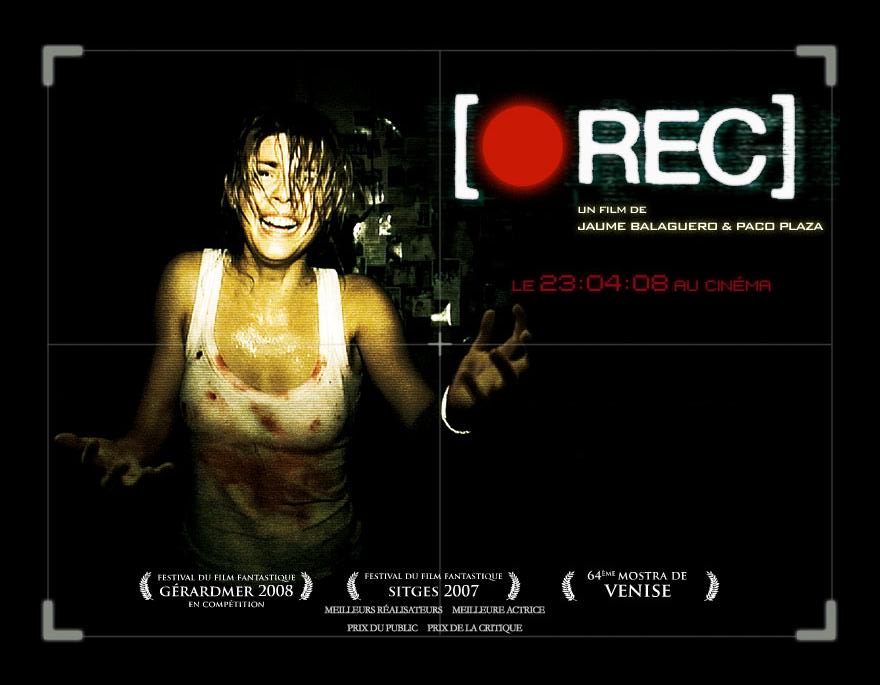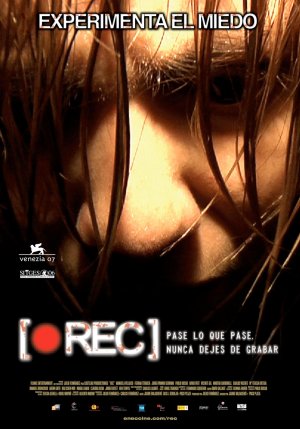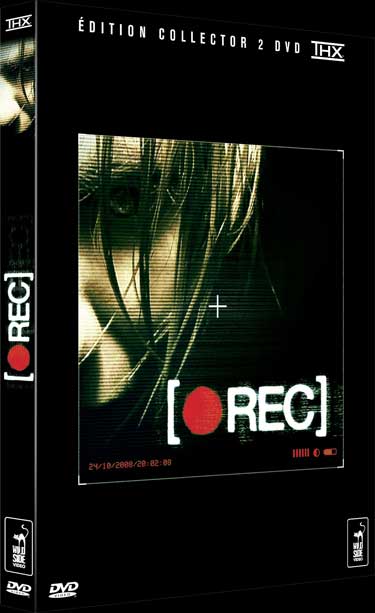
As the characters express their concerns, it feels like they’re including the audience in their plight. There’s a brief scene featuring Angela and Pablo interviewing the suspicious residents about the events occurring. By placing a news crew at the heart of the story, it also legitimises the reason for the events to be documented.

That’s where works beautifully because it genuinely feels like we’re watching a documentary gone wrong. The success of found-footage movies depends on the notion of whether one believes that you’re watching unmediated footage of something that actually happened. While many movies have attempted this approach including The Zombie Diaries (2006) and Cloverfield (2007), one would argue they lack a degree of authenticity. Using the same device employed by The Blair Witch Project, co-directors Balaguero and Plaza create an adrenaline-fuelled addition to the horror genre. It’s only a subtle moment but Cesar’s presence is hilarious. He puts his finger on his chain and poses to look educated and important for the audience. After being informed the camera’s been recording the entire time, his entire demeanour changes. With pure terror in his eyes, he starts blaming the family for the outbreak because they eat raw food. Clearly delighted at the idea of becoming famous, he begins preparing to look his best, combing his hair and wiping his sweaty brow, then making numerous xenophobic comments about the family living above him. Arguably the most enjoyable secondary character is Cesar (Carlos Lasarte) and his standout scene occurs when Angela interviews him. From the old couple arguing with themselves to the child (Claudia Silva) and protective mother (Maria Lanau), each actor is believable. The supporting cast is made up of largely unknown actors hired for their improvisational skills.

However, she reacts to the situation escalating around her admirably, making her a strong female lead at the heart of the chaos. Admittedly, her overly joyful persona may be irritating to some. She exclaims “we have to show them everything” as she demands Pablo to keep the camera rolling. As the story unravels, her urgency to accurately document the traumatic events is admirable. She’s instantly personable and cheery, particularly in the beginning when she’s joking with the firefighters and playing basketball at the station. She suits her role perfectly bringing a sense of realism to her character, infusing Angela with a charming personality.
#BUY REC 2007 ONLINE MOVIE#
As the host of While You’re Asleep, the actress’s naturalistic performance transposes the movie into a television broadcast.

#BUY REC 2007 ONLINE TV#
Originally beginning her career as a TV presenter for the Spanish show Cuatrosfera (2005), Manuela Velasco is perfectly cast as our lead protagonist Angela. What was supposed to be a routine call quickly spirals out of control, as Angela and Pablo find themselves in the epicentre of a mysterious, deadly, highly contagious disease. When investigating the apartment, what they find is a hysterical person, covered in blood, highly agitated, or perhaps infected. After meeting a local squad of firemen and several routine interviews, they receive a call that requires urgent attention: an elderly woman has fallen in an apartment complex and is in need of medical attention.

Their episode focusses on the twilight activities and daily struggles of firefighters at the Barcelona fire station.
#BUY REC 2007 ONLINE SERIES#
In a decade when horror was slowly becoming overshadowed by New French Extremism such as Irreversible (2002) and High Tension (2003), reminded the world that Hispanic horror can match the supernatural frights and vicious brutality of their neighbours.Ī reporter named Angela (Manuela Velasco) and her cameraman, Pablo (Pablo Rosso), are filming a documentary series called While You’re Asleep. However, co-directors Jaume Balaguero and Paco Plaza injected much-needed life into the genre with the Spanish horror. Although several prevailed, such as Paranormal Activity (2007), many failed to blur the lines between reality and fiction adequately, eventually vanishing into mediocrity. Audiences believed the film was real and its director, Ruggero Deodato, was duly arrested and charged with several counts of murder.įollowing the incredible success of The Blair Witch Project (1999), a plethora of imitators attempted the found-footage formula. Considered the grandfather of the found-footage genre, Cannibal Holocaust (1980) was mired by real-life controversy once released. Their conceit is that we’re watching something captured and experienced by real people that’s raw and unedited. There’s only a handful of movies that prompt visceral reactions the way pseudo-documentaries do.


 0 kommentar(er)
0 kommentar(er)
